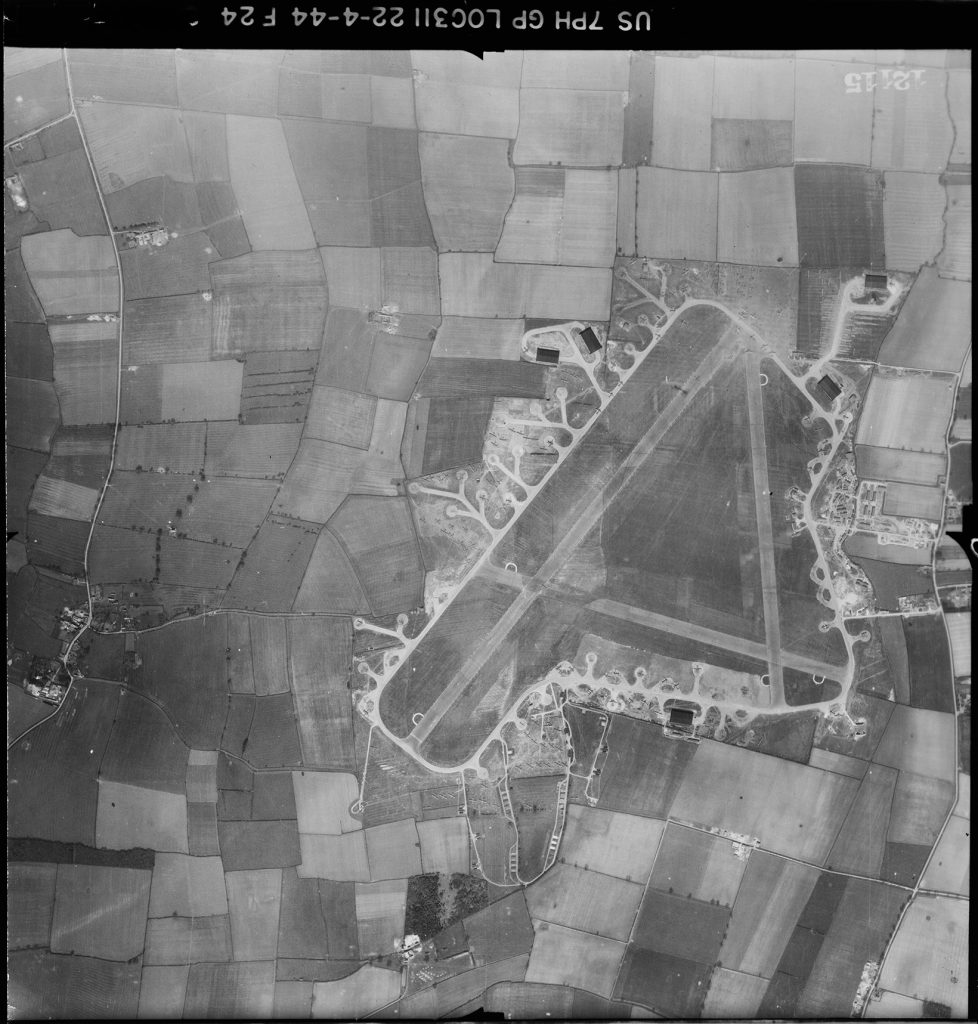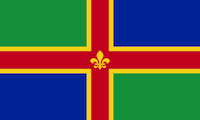- Source information: Wikipedia
- Another source of useful information: Loveden.ORG
- National Archive.

In 1940, meadows six miles east south east of Newark, between the villages of Fenton and Stragglethorpe (1.5 miles from Stubton), were requisitioned for use as a relief landing ground by training aircraft from the RAF College at Cranwell. Known unofficially as Fenton, the site continued to serve Cranwell for the next 18 months, gradually collecting a number of huts through the facilities were always basic.
In February 1942, Fenton was scheduled for upgrading to a full-size airfield of Class A standard when it was given the official name of Fulbeck after the village 2.5 miles to the east in which parish most of the domestic sites were placed.
USAAF use
In May 1943, a beam approach flight used the airfield but in August Fulbeck was allocated for USAAF Ninth Air Force use and work commenced to increase accommodation and the number of hardstandings, a total of 15 loops being added. Constable Hart & Co. Ltd and F. G. Mintee Ltd were the contractors involved.
434th Troop Carrier Group
In October 1943, the 434th Troop Carrier Group arrived at Fulbeck from Baer AAF, Indiana. The group was assigned to the 53d Troop Carrier Wing and flew Douglas C-47/C-53 Skytrains. Operational squadrons of the 322d and fuselage codes were:
- 71st Troop Carrier (CJ)
- 72d Troop Carrier (CU)
- 73d Troop Carrier (CN)
- 74th Troop Carrier (ID)
The 434th TCG had 56 C-47s and started training with some detachments elsewhere until finally moving to RAF Welford on 10 December 1943.
442d Troop Carrier Group
At the end of March 1944 the 442d Troop Carrier Group arrived at Fulbeck from Baer AAF, Indiana. The group was assigned to the 50th Troop Carrier Wing and flew Douglas C-47/C-53 Skytrains. Operational squadrons of the 442d and fuselage codes were:
- 303d Troop Carrier (J7)
- 304th Troop Carrier (V4)
- 305th Troop Carrier (4J)
- 306th Troop Carrier (7H)
The 442d received additional training with C-47’s and C-53’s at Fulbeck, and later used these aircraft for operations. The group flew the first missions during the invasion of the Continent, dropping paratroops of the U.S. 82nd Airborne and U.S. 101st Airborne Divisions near Sainte-Mère-Église on 6 June 1944 and flying a resupply mission on 7 June, being awarded a Distinguished Unit Citation for its part in the Normandy invasion.
The 442d TCG moved to RAF Weston Zoyland in mid-June after having taken part in the D-Day operations.
440th Troop Carrier Group
During the following two months there was little activity at Fulbeck until some C-47s of the 440th Troop Carrier Group arrived in September 1944 from RAF Exeter to use Fulbeck as part of Operation Market, the air component of Operation Market-Garden.
The 440th TCG dropped paratroops of 82nd Airborne Division near Groesbeek Holland on 17 September 1944 and released gliders with reinforcements on 18 and 23 September.
RAF use
The IX Troop Carrier Command relinquished the airfield back to the RAF in late September and No. 5 Group Bomber Command moved in the distinguished No. 49 Squadron from Fiskerton, an airfield which was transferred to No. 1 Group the following month.
On 2 November the recently-formed No. 189 Squadron arrived from Bardney having taken part in its first operation the previous day. Both Nos. 49 and 189 Squadron’s Lancasters remained based at Fulbeck until April 1945. No. 49 flew some 60 raids from the airfield losing 15 aircraft and No. 189 took part in 40 raids with 16 aircraft lost. No. 189 moved back to Bardney on the 8th of the month and No. 49 moved to Syerston on the 22nd. On the morning of transfer, a No. 49 Squadron Lancaster making a low farewell pass across the airfield crashed into the technical area and of the resulting 24 casualties among air and ground personnel, 15 were fatal.
Bomber Command operations from Fulbeck cost 38 Lancasters, either failing to return or destroyed in crashes.
Postwar use
RAF Fulbeck memorial. With no flying unit in residence, the station came under No. 255 Maintenance Unit handling RAF surplus stores, much of the material being disposed of in auctions held during 1948. The airfield was then on a care and maintenance status for five years as a sub-station of No. 93 Maintenance Unit, and at one point the hangars housed the Air Historical Branch’s static aircraft collection.
Retained as a reserve airfield, Fulbeck was also used as a Ministry of Defence training area playing host to a number of military exercises. The runways, apart from narrow strips used as farm roads, were removed in the 1970s and all but three of the hardstandings adjacent to a perimeter track was kept intact. At one time Fulbeck was proposed for a nuclear waste disposal site.
RAF Fullbeck is still used for military training exercises and a karting track has now been built on a runway. The control tower was demolished in the 1990s. The airfield was sold off by the MOD in about 2012.
Video of the main runway.
